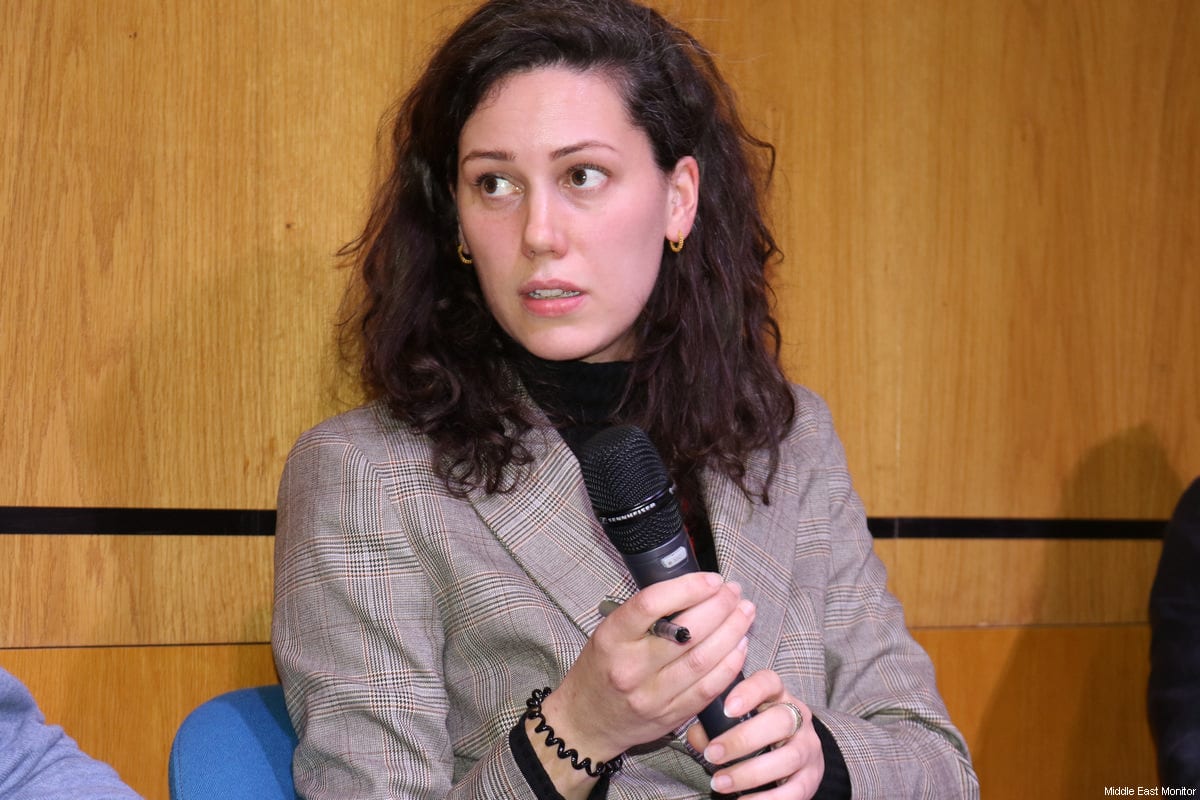There is something unnerving about Fadi Al Jabour’s doll. Painted using oils in the abstract realistic style, from a distance she is a cute with round cheeks and blond hair secured into pigtails with red ribbons. On closer inspection just one of her eyes is baby blue. The other is small and a brownish yellow in colour, partially hidden behind a decaying eyelid.
A doll is perhaps not what you would expect when imagining Middle Eastern art; nor is its relation to Syria or the conflict immediately obvious. Yet her fixed, empty stare depicts fear and the daily threat of violence and uncertainty people there live under. “It is about war but it’s also about distraction or unease in living” says Yahya Zaloom, director of P21. In the time it takes for her to blink, hundreds of lives could be wiped out.
On the other side of the gallery, Tarek Tuma’s Hamza Bakkour is a stark contrast. His vivid painting is of the 13 year-old boy who had his jaw blown off during the Assad army siege of the rebel stronghold Baba Amr in Homs last year. Set against a green background, thick, dark blood drips from the boy’s face. It’s hard to look at the picture for too long.
Al Jabour and Tuma’s paintings are part of a much wider collection of work – from photography, metalwork, installations, political cartoons and sculptures – that make up #without words, an exhibition of Syrian artists at P21. Diverse in style, yes, but all have been born out of the humanitarian crisis and long struggle for freedom in their country and offer a new way to look at the conflict that challenges official perceptions of war.
Inzajeano Latif, co-curator and assistant director at P21, points out a small screening room downstairs in the gallery filled with journalistic-style photographs. They are the product of Lens Young, an anonymous artists’ collective made up of citizen journalists and photographers, who use anything from mobile phones to 35mm cameras to capture the revolution. 
Amongst the more disturbing photographs are those of dead babies. “Some of the images are not what we see in western media at all” says Latif. “We have a candy coated view of the conflict. You’ll see some smoke, you’ll see some rubble, and you’ll see Middle Eastern people in tears banging their heads. But you’ll never see the direct result of the conflict.”
The idea behind the exhibition is to make the viewer look, observe and feel; to indirectly insert a lasting impression into their mind. “Does it enhance what you’ve seen; does it take away from what you’ve seen; does it relate to what you’ve seen in the western media?” says Latif. “We’re trying to make this moment last as long as possible” adds Zaloom.
The exhibition is a collaboration between P21 and the charity Mosaic Syria, who toured refugee camps in Jordan, Turkey and Lebanon, to find the work. The show largely features emerging, young artists because those who are well established cannot get their work across the border, it is too easily identified. “Or they will not release their work because they are frightened it will be destroyed” says Zaloom.
 The downside of this is that it can be a struggle to find pieces of a high enough quality to display at the gallery. Also, because the artists are producing work under pressure, in difficult conditions, this ultimately affects the standard of the work. One wall is filled with a variety of such pictures, like a collage. “Maybe they’re not up to a standard to put in an art gallery, but if we put them all together and put some text about them, it is as it is, a piece of work” says Zaloom.
The downside of this is that it can be a struggle to find pieces of a high enough quality to display at the gallery. Also, because the artists are producing work under pressure, in difficult conditions, this ultimately affects the standard of the work. One wall is filled with a variety of such pictures, like a collage. “Maybe they’re not up to a standard to put in an art gallery, but if we put them all together and put some text about them, it is as it is, a piece of work” says Zaloom.
#withoutwords does not only feature emerging artists. A wall downstairs is filled with the familiar work of Ali Ferzat, the prominent political cartoonist who had his hands broken by Assad loyalists in 2011, a nasty lesson stop him drawing about Assad. One image shows a man trapped behind four bars, seemingly unable to escape even though those to the left and right of him have been broken off to create an opening in his cell.
Upstairs are another collection of photographs, also by Lens Young. According to Zaloom, it was hard to find photographs for the exhibition. These days, internet in Syria is sparse, and without this sending big files and obtaining good quality pictures is extremely challenging. But he was clear that the exhibition wouldn’t work without them.
They have no colour and depict stark, flat landscapes; the largest is 1.4 megabytes. The challenge, says Latif, was how to make them work in the Syrian context.
“We had the idea to enlarge the images and push them to their limits, the same way many people there are being pushed to their limits; starvation, depravation. When you stand back you have this distance with the whole situation, just like we have when we watch the news or read an article there’s a distance. Like an episode of what’s happening there.”
Ali Ferzat will be speaking at the P21 gallery in August about the impact of his work in Syria and in the wider context of the Arab uprising.
The views expressed in this article belong to the author and do not necessarily reflect the editorial policy of Middle East Monitor.











